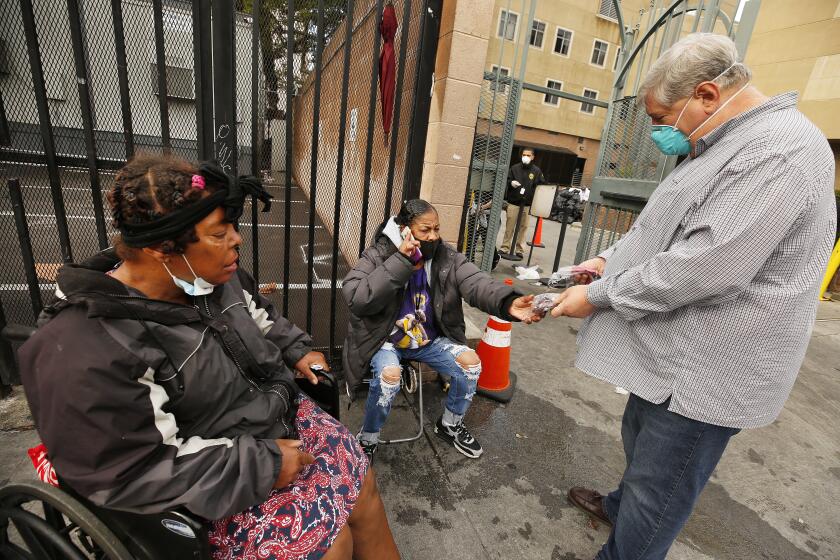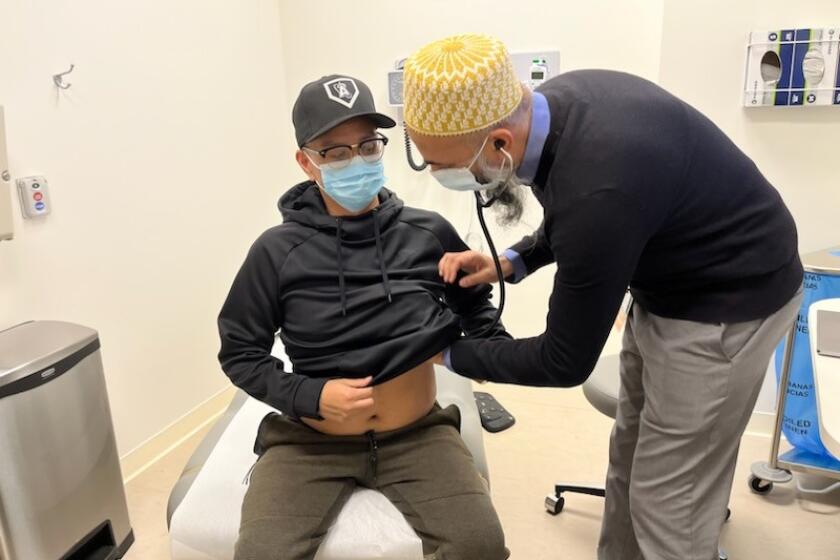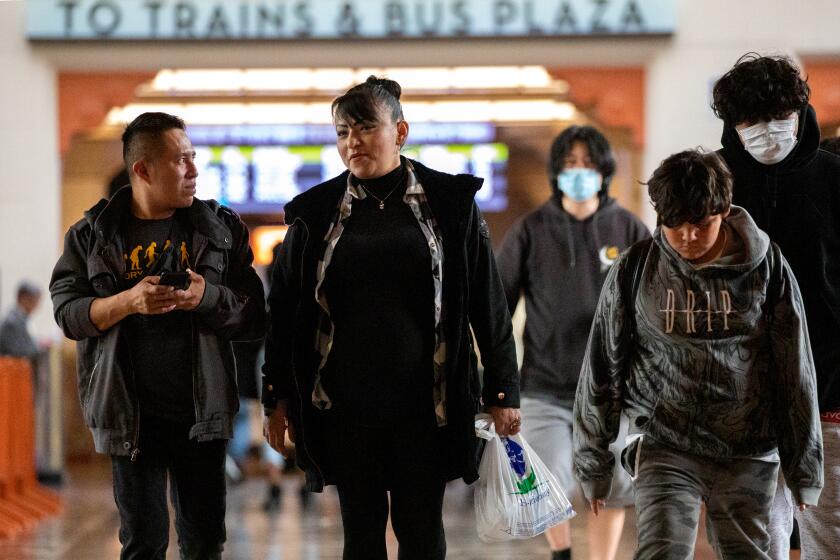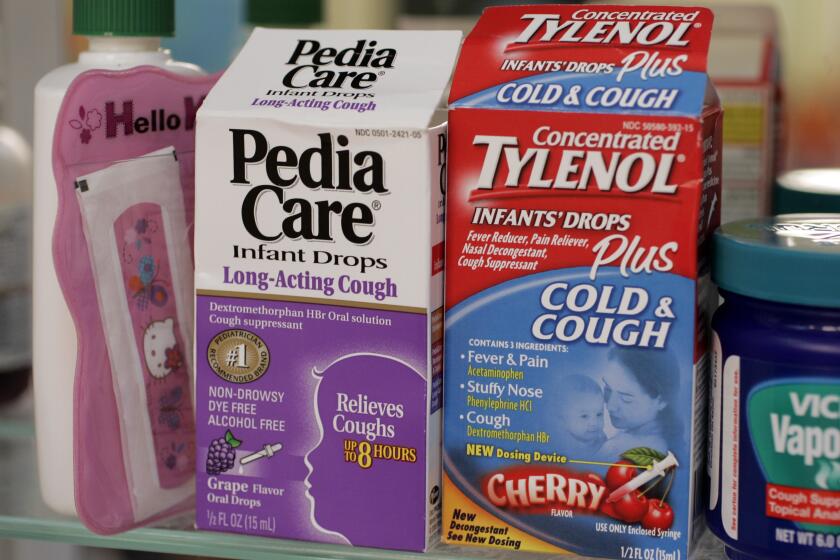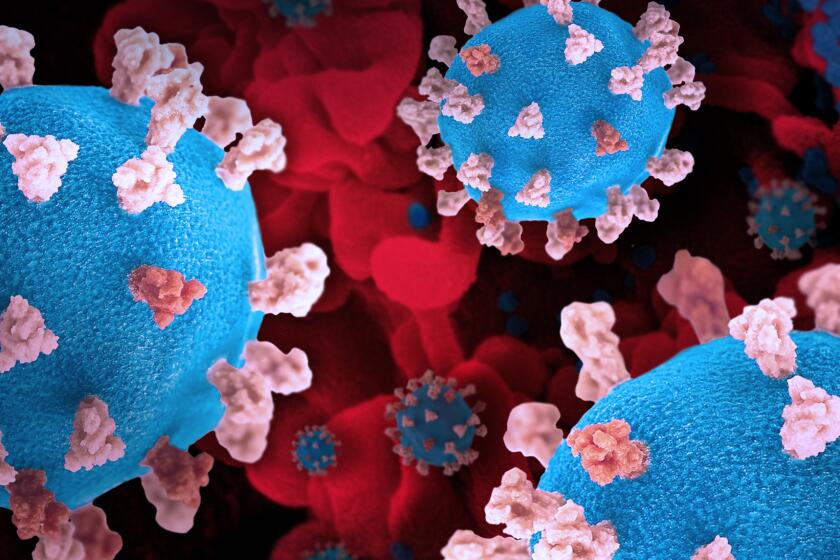Health officials are urging masks again amid high COVID, flu levels
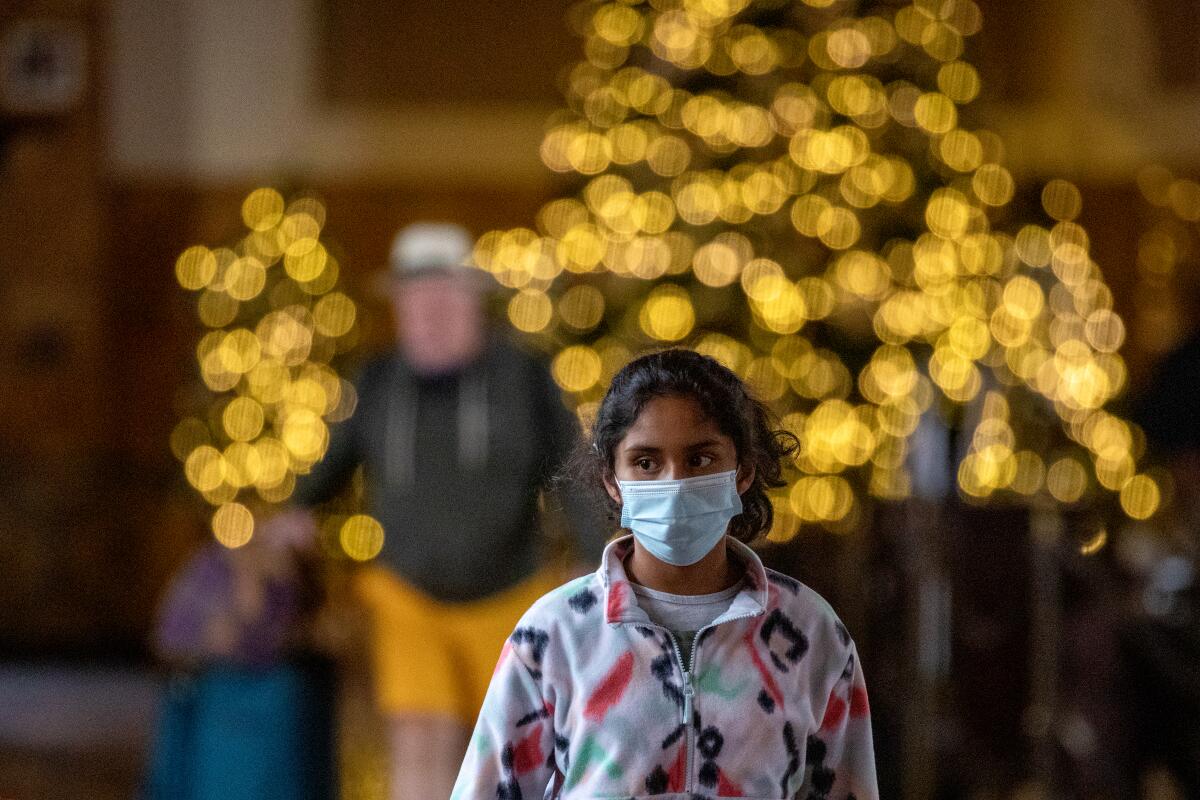
- Share via
With COVID-19, the flu and other respiratory diseases circulating widely in Los Angeles County and elsewhere, many officials are urging residents to use a familiar tool to help thwart transmission: masks.
But why should residents consider donning face coverings again, especially since mandates are no longer in place?
Health officials are largely united in noting that wearing a mask reduces the risk of viral transmission. There’s also a body of academic research supporting this.
“We also encourage you to wear a high-quality, well-fitting mask to prevent the spread of respiratory illnesses,” Dr. Rochelle Walensky, director of the U.S. Centers for Disease Control and Prevention, said in a briefing with reporters last week. “CDC continues to recommend masking for anyone choosing to travel by plane, train, bus or other form of public transportation.”
Here are some reasons why officials are again urging people to put on their masks.
New hospitalizations have tripled in the last month. A new mask order is possible in the coming weeks if hospitalization metrics worsen.
Higher case rates
California has recently seen a marked uptick in coronavirus transmission.
These increases come with additional risk. As case rates rise, “your chance of catching COVID during your routine activities — grocery shopping, eating out, running errands, going to work — will increase,” according to Los Angeles County Public Health Director Barbara Ferrer.
For instance, with L.A. County’s recent coronavirus case rate around 260 cases a week for every 100,000 residents, if you were to attend a party with 200 people, the chance that at least one person there is infected is 80% to 90%, Ferrer said.
If the case rate were to rise to 350, the chance of that happening is almost 100%, she added.
“If you’re going to an event such as a concert or a large Christmas party, there is now a higher likelihood that one or more persons at the event is infected, they could unknowingly infect you, and you in turn could unknowingly infect your friends, your co-workers or your family,” Ferrer said.
While a coronavirus infection may be mild for many, other segments of the population are far likelier to become severely ill.
“For the millions of people in the higher-risk categories — our elderly family members and friends, those with underlying health conditions and those who are immunocompromised — increased chances of being exposed can have a devastating impact,” Ferrer said.
When everyone around them stops taking pandemic precautions, it gets harder for immunocompromised Americans to protect themselves against COVID.
COVID-19 remains deadlier than the flu
In L.A. County, COVID-19 deaths are increasing. For the seven-day period that ended Thursday, the county reported 82 deaths, up from 58 the prior week.
“We’re concerned about the possibility of seeing even higher increases in these numbers a few weeks from now,” Ferrer said.
Since the start of October, some 25,000 people in the United States have died from COVID-19. About 4,500 have died from the flu, the CDC has estimated.
Flu is still surging in L.A. County. The positivity rate for flu is 30%, up from 25% the week before.
The coronavirus and the flu are surging in California. Here are the steps to protect yourself from getting sick during the holiday season.
Some hospitals are already stressed
A number of hospitals in L.A. County are reporting intense stress because of the demands of patients who are sick with COVID-19, flu or RSV. One emergency department, in Pasadena, reported long wait times ranging from six to 11 hours for those with less severe illnesses.
“Wearing a mask in indoor public places, among other safety measures, effectively slows the spread of respiratory viruses that make children and the elderly very sick,” according to the California Department of Public Health.
Masking can also “significantly slow the spread and protect babies and young children who do not have immunity and are too young to wear a mask themselves,” the department wrote on Twitter.
With COVID-19, flu and RSV cases rising, drugmakers and retailers say soaring demand is leading to empty shelves.
Disruptions are expected with higher case rates
When cases rise, outbreaks become more frequent — leading to disruptions at home, school and work. Too many delivery drivers out sick could lead to delays in stocking shelves at stores or delivering packages. Small businesses may be affected if they can’t get their supplies. And holiday parties may have to be canceled.
At least one restaurant in San Francisco said it had to close for a week “due to an upsurge of COVID cases within our team members.”
Reinfection remains a risk
Some who have recovered from COVID-19 think they’re immune to the disease. But there’s a significant weakening of that protection received from infection about 90 days later, Ferrer said.
Repeat infections can happen even more frequently, sometimes within weeks of an earlier infection. Among those who have had repeat infections is Pfizer Chief Executive Albert Bourla, who said he tested positive for the coronavirus in mid-August, then again in late September.
An experimental decoy drug that’s designed to lure the coronavirus away from cells is being readied for tests in humans.
Long-term health risks for COVID survivors
The health threat posed by COVID-19 doesn’t necessarily pass once an infection clears.
“The data increasingly points to concern about potential long-term consequences of even mild infection that merit attention,” Ferrer said.
They include:
- One in five adults have a health condition that might be related to prior COVID-19 illness, according to a study published by the CDC.
- Researchers have found an association between coronavirus infection and the risk of developing diabetes.
- COVID-19 survivors are at increased risk for an Alzheimer’s disease diagnosis within a year after a coronavirus diagnosis.
- COVID-19 was tied to an increased risk of Parkinson’s disease, ischemic stroke and intracerebral hemorrhage.
More to Read
Sign up for Essential California
The most important California stories and recommendations in your inbox every morning.
You may occasionally receive promotional content from the Los Angeles Times.
